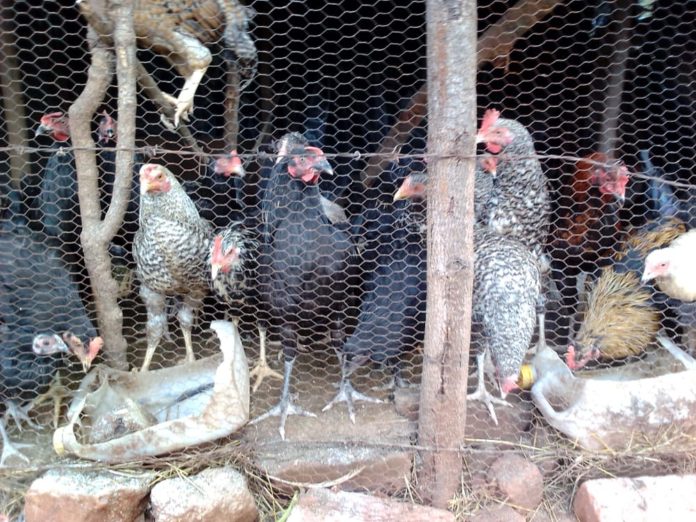By Hwande Sheunesu
Zimbabwe’s communal farmers are still doing roadrunner production to supplement for their nutritional requirements. However an economic paradigm has evolved in the recent years with the view of the roadrunner project as a road map to agricultural growth and development. Looking at it from a distance road runner production is a poor project and therefore many farmers would prefer broiler venture which is not feasible for those who lack access to capital resources. I therefore urge farmers to start with what they have, it takes patience and financial discipline to manage small savings obtained from road runner project for a farmer to grow big. Many think of waking up having a huge and highly profitable project off which it will never happen overnight.
From the economic point of view roadrunner project is more profitable when compared to broilers because it has low production cost, thus one can use maize, traditional grains (finger millet, millet, sorghum) and sunflower as feed with maize being the main source of carbohydrates 77% useful for energy production, finger millet containing 12% calcium which is needed for egg shell formation and born formation, millet constituting 18% crude protein essential for growth while sunflower yields 25-50% fat content and 15-25% protein respectively. In some instances a farmer can buy road runner starter mesh to ensure optimum growth for chicks. Most farmers lack information and end up buying broiler feeds to give to the road runners which is not advisable because the broiler feed is specifically made for birds with a higher feed conversion ratio and a short life span of six weeks(broilers). Road runners will usually have enlarged internal organs owing to a continuous consumption of broiler feeds and they will eventually die.
The use of traditional grains as feed underscore the need for their production in the marginal areas in line with roadrunner production. Again road runners are resistant to diseases making the mortality rate relatively low than that of broilers. They have a better adaptation to adverse weather conditions as compared to broilers. Basically there are two main production systems suitable for roadrunner production which are extensive production system where birds can run freely and scavenge for their own food, make nests in the bushes and cheeks feed for themselves the birds are allowed to run in a fenced area during the day and then confined overnight, the system has low labour and initial costs.
However the birds are exposed to predation under this system. Semi -intensive production system in which a portable house with a run attached to it is built, the birds are protected at all times against predators. However it is not hygienic since the floors are smelly and muddy during the rainy season.
Infectious Bursal Disease (IBD), Newcastle, Avian Influenza and Swollen head syndrome diseases are more prevalent in road runners. Infectious Bursal Disease is caused by a virus serotypes 1and 2, it is transmitted by contaminated water, feed and droppings, poultry equipment and air. It is characterized by nervous signs e.g. trembling or staggering gait, dehydration, prostration and sudden death. There is no specific treatment for this disease, however the use of broad spectrum antibiotics e.g. tetracyclines are administered to prevent secondary bacterial infections. Vaccination using IBD vaccine can be done at day 12-13 and then boosting the vaccine at day 18-21 together with the use of bio-security measures to control the disease.
Newcastle is a highly notifiable diseases which is caused by paramyxo Virus Syno type B1.It is transmitted by air, infected stray birds, contaminated farm implements, water and feed. It is characterized by coughing and gasping, 90% mortality in young chicks and gurgling. There is no specific treatment for Newcastle affected birds should be slaughtered and burnt. Vaccination using La Seta Vaccine and bio security measures should be done to control the diseases.
Avian influenza is commonly known as bird flu, it’s a zoonotic disease thus it can be transmitted to human beings.it is caused by H5N1 virus the transmission is by waterfowl, infected birds and poultry products ,infected person and migrating birds. The disease is characterized by bloody nasal discharge, swelling of head, wattle, combs and eyes, diarrhea, ruffled and worn out feathers, nervous signs the disease lasts 7-10 days. No specific control for the diseases and antibiotics can be used for secondary bacterial infections. Vaccinations using avian influenza vaccine is done to control the disease.
The swollen head syndrome is caused by either virus or bacteria, clinical signs are sneezing, swollen eyelids, accumulation of fluids under the skin of the head region, the swelling starts around the eyes and eventually the whole head including wattles and throat. There is no vaccine for the disease therefore strict hygiene and sound management practices are the best.
The traditional herbs like alovera (gavakava), black jack (tsine, umhlabangubo) can be used as antibiotics to curtail production cost. Both herbs are boiled, allowed to cool then given to the birds as drinking water during this period other drinking containers should be removed from the vicinity of the birds because the remedy is very sower and therefore the birds can only drink it because of compulsion.
The market is readily available in restaurants for example, Pagarwe restaurant and within the communities e.g at Mbare musika near Mutare rank this is due to special dietary needs and different taste and preferences.









